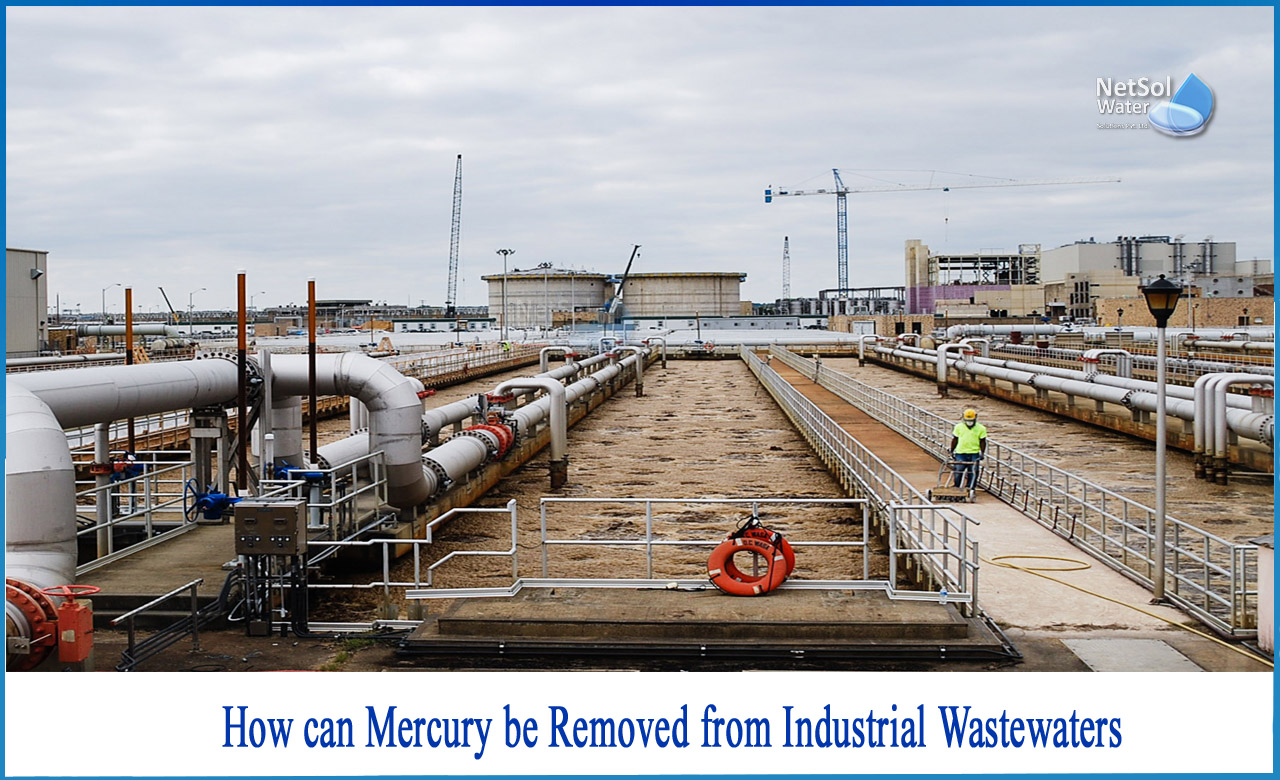How can Mercury be removed from Industrial Wastewaters?
Mercury (Hg) is a well-known heavy metal that exists naturally as well as can be introduced into the environment via human activity. To lower mercury levels in the liquid streams and emissions, industrial facilities that handle mercury, such as those in the chlor-alkali and electronics sectors, among others, must typically implement water treatment methods.
The most effective mercury elimination technologies can be described as:
1: Membrane Separation
Membrane filtration is a type of physical separation that operates on the size exclusion principle. A liquid stream is passed over a semi-permeable membrane with precisely-sized pores that prevent larger particles and molecules while allowing smaller ones to pass through. As a result, membrane filtration is classified depending on pore size, with the greatest pore size being microfiltration (MF), ultrafiltration (UF), the largest being nanofiltration (NF), and the smallest being reverse osmosis (RO).
RO/NF has holes small enough to retain divalent cations like mercury, but their usage is often limited to secondary or tertiary treatment because of their susceptibility to clogging and fouling. UF is also used for mercury removal; however, because UF pores are too big to absorb dissolved mercury ions, it is usually utilized after precipitation, which results in larger molecules or suspended particles.
2:Chemical Precipitation
It is by far the most prevalent water treatment technology for removing mercury from both groundwater and wastewater since it is both cost-effective and simple to use. A facility will initially add a chemical precipitant to the stream in order to remove mercury through chemical precipitation. The precipitant reacts with dissolved elements in one of two ways to aid mercury removal: either by generating insoluble elemental mercury or mercury compounds or by forming particulate particles that adsorb dissolved mercury in the stream. Following the precipitation reaction, the facility will use physical separation methods such as clarifying or filtering to eliminate insoluble solids from the liquid stream.
3:Adsorption
Another wastewater treatment process that is often used for mercury removal is adsorption. It has several advantages, including no sludge development, high selectivity for mercury and/or other heavy metals, and flexibility in adsorption media material selection. Adsorption, like precipitation, can reduce mercury concentrations to less than 2 g/L.
It is the process through which material accumulates on the surface of a solid due to molecular attraction forces. A liquid stream is often passed through a bed of adsorbent material in wastewater treatment applications. As the stream passes through, dissolved contaminant molecules bind to the adsorbent material and are separated from the liquid stream. The adsorbent media will become saturated over time, reducing its ability to extract specific pollutants. Some adsorbent mediums can be regenerated for additional use by desorbing previously collected pollutants with heat or other techniques. However, exhausted adsorbent material will need to be replenished at some point.
Adsorbent media replacement is, in fact, the most expensive aspect of running an adsorption system. As a result, it is critical to ensure that the system is designed to meet the needs of a facility, taking into account the kind and form of adsorption media utilized. Although various materials are available for specialized applications, activated carbon remains the most often used adsorbent material for mercury elimination. Mercury-selective ion exchange resins are also particularly successful as polishers and as primary removal methods for liquid wastes requiring ultralow mercury removal or for brackish stream treatment.
4: Biological Treatment
Living microorganisms are used in biological treatment systems to break down and eliminate organic pollutants. While mercury is an inorganic element, biological therapy can be employed to transform dangerous soluble mercury species into less soluble ones that can be easily removed or kept. The main advantage of biological treatment is its low cost, especially in streams with high mercury concentrations.
Conclusion
To get the highest potential mercury removal efficiency, a facility must carefully evaluate which elements are present in addition to mercury, as well as stream pH, temperature, flow rate, volume, and BOD.
Do you still have some questions?
We are here to help! Based on our many years of experience manufacturing some of the most cost-effective water and wastewater treatment systems for families and companies, we'd love to assist you in finding a solution that meets your needs and budget. It is our obligation to conserve water and to ensure that wastewater is treated in order to prevent water pollution. Ourwastewater treatment systems are offered with a variety of customized features to match your specific needs.
For further information or product related query, call us at +91 9650608473 or email at enquiry@netsolwater.com



